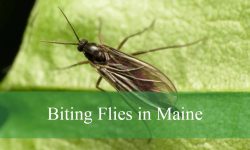Arizona’s desert landscape may seem too dry for mosquitoes, but these pests are surprisingly common across the state. From urban neighborhoods in Phoenix to riparian areas near rivers and canals, different mosquito species thrive wherever standing water is found.
Some mosquitoes in Arizona are simply a nuisance with itchy bites, while others are capable of spreading diseases such as West Nile virus or even dengue under the right conditions. Learning how to identify them helps residents protect themselves and their families.
This guide explores 10 types of mosquitoes in Arizona, complete with pictures and identification tips. By understanding their habits, appearance, and habitats, you’ll know which species are buzzing around and when to watch out for them.
Different Types of Mosquitoes Found in Arizona
Western Encephalitis Mosquito (Culex tarsalis)

The Western Encephalitis Mosquito is one of the most common mosquito species in Arizona. It is best known as a primary vector of West Nile virus and Western equine encephalitis. This species is medium-sized, with long legs and a slender body, typically gray to brown in color with pale bands on the abdomen.
Culex tarsalis is most active at dusk and during the night, making it a nuisance for outdoor activities after sunset. The females feed on both birds and mammals, which allows them to spread diseases between different hosts. Their bite can be irritating and itchy, often leaving behind a small, raised welt.
In Arizona, this mosquito is commonly found near irrigated fields, canals, ponds, and other standing water sources. It thrives in agricultural and suburban areas, especially where water is slow-moving or stagnant. Hot summers and mild winters provide ideal conditions for them to reproduce in large numbers.
Southern House Mosquito (Culex quinquefasciatus)
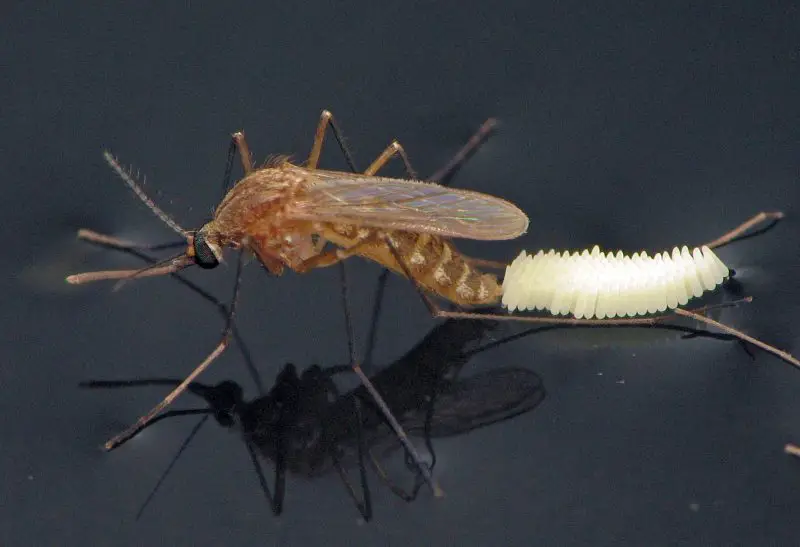
The Southern House Mosquito is another widespread mosquito in Arizona, particularly in urban and suburban settings. This species is recognized by its brownish body and unmarked wings, though it can be difficult to distinguish from other Culex species without close examination.
It is a known carrier of West Nile virus and St. Louis encephalitis, posing a public health concern across the state. These mosquitoes prefer to feed at night, targeting both humans and birds. Their bite can cause discomfort, with swelling and itching that may last for several days.
They are often found breeding in polluted or stagnant water such as storm drains, ditches, and neglected containers around homes. Because Arizona’s desert environment encourages water storage, the Southern House Mosquito can quickly establish in residential areas where water is improperly managed.
Inland Floodwater Mosquito (Aedes vexans)
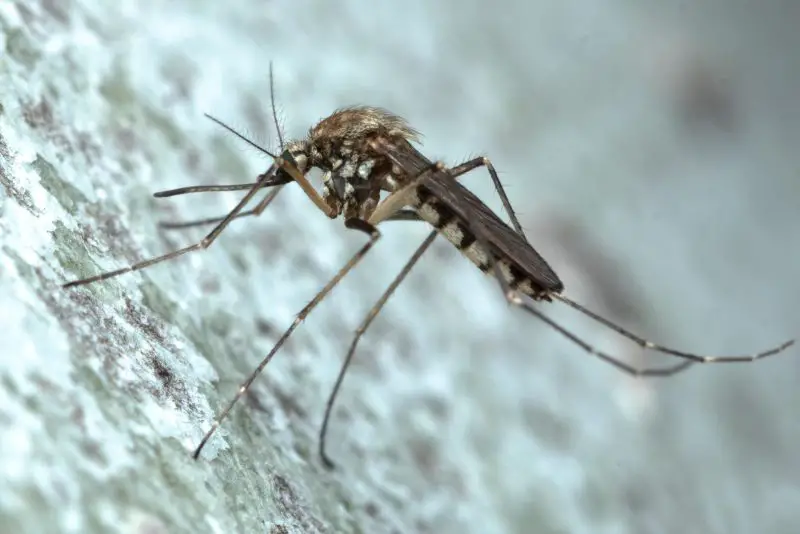
The Inland Floodwater Mosquito is among the most aggressive biters in Arizona. It is identified by its dark brown body with white bands on its legs and a distinctive V-shaped marking on its thorax. Unlike many other mosquitoes, it is active during the day as well as at dusk.
This species does not typically carry major diseases in Arizona, but its painful and frequent bites make it a serious nuisance to people and animals. The females often bite in swarms, particularly after rainfall, making outdoor activities uncomfortable.
Aedes vexans breeds in temporary pools formed after heavy rains or flooding. In Arizona’s desert climate, they emerge in large numbers following monsoon storms, often in rural or semi-rural areas. Their ability to reproduce quickly after rain events makes them a seasonal problem.
Yellow Fever Mosquito (Aedes aegypti)
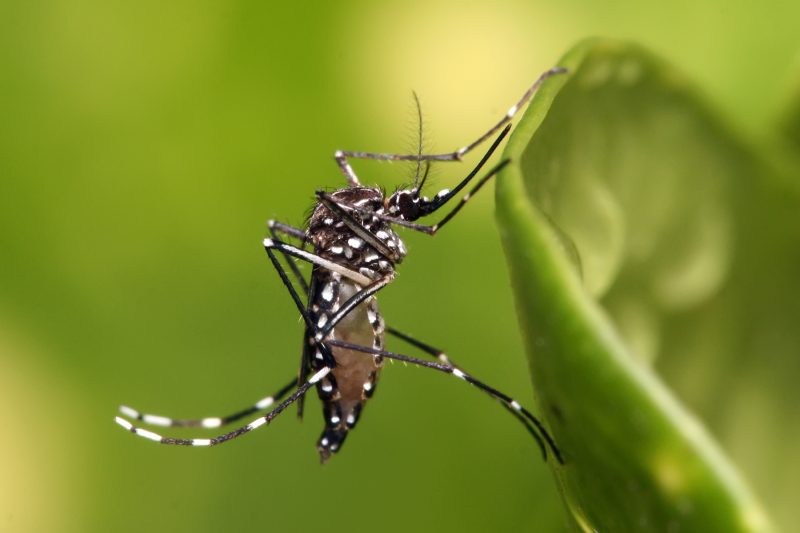
The Yellow Fever Mosquito is one of the most concerning mosquito species in Arizona due to its ability to transmit serious diseases. It is a small, dark mosquito with white markings on its legs and a distinctive lyre-shaped pattern on its thorax.
This species is well adapted to living around humans, often breeding in artificial containers such as buckets, flowerpots, and water storage tanks. Unlike many mosquitoes, it prefers to bite during the daytime, especially in the morning and late afternoon. Its bites are often concentrated on the ankles and lower legs.
Aedes aegypti is capable of spreading dengue, Zika, chikungunya, and yellow fever viruses, though outbreaks in Arizona are rare. Its presence in urban areas across the state, however, makes it a species closely monitored by health officials.
Asian Tiger Mosquito (Aedes albopictus)

The Asian Tiger Mosquito is a relatively recent invader in Arizona but has become increasingly common in residential neighborhoods. It is easy to identify by its striking black-and-white striped body and legs, giving it the “tiger” appearance.
This mosquito is a very aggressive daytime biter, often attacking humans outdoors in shaded areas. Its bites are itchy and persistent, and because it feeds multiple times in a short period, it is considered a serious pest. Like Aedes aegypti, it can also transmit dengue, Zika, and chikungunya viruses.
Asian Tiger Mosquitoes breed in small containers of standing water, including bird baths, discarded tires, and clogged gutters. Arizona’s urban landscapes, where homeowners often keep water-filled items outside, provide plenty of breeding sites for this species.
Western Treehole Mosquito (Aedes sierrensis)
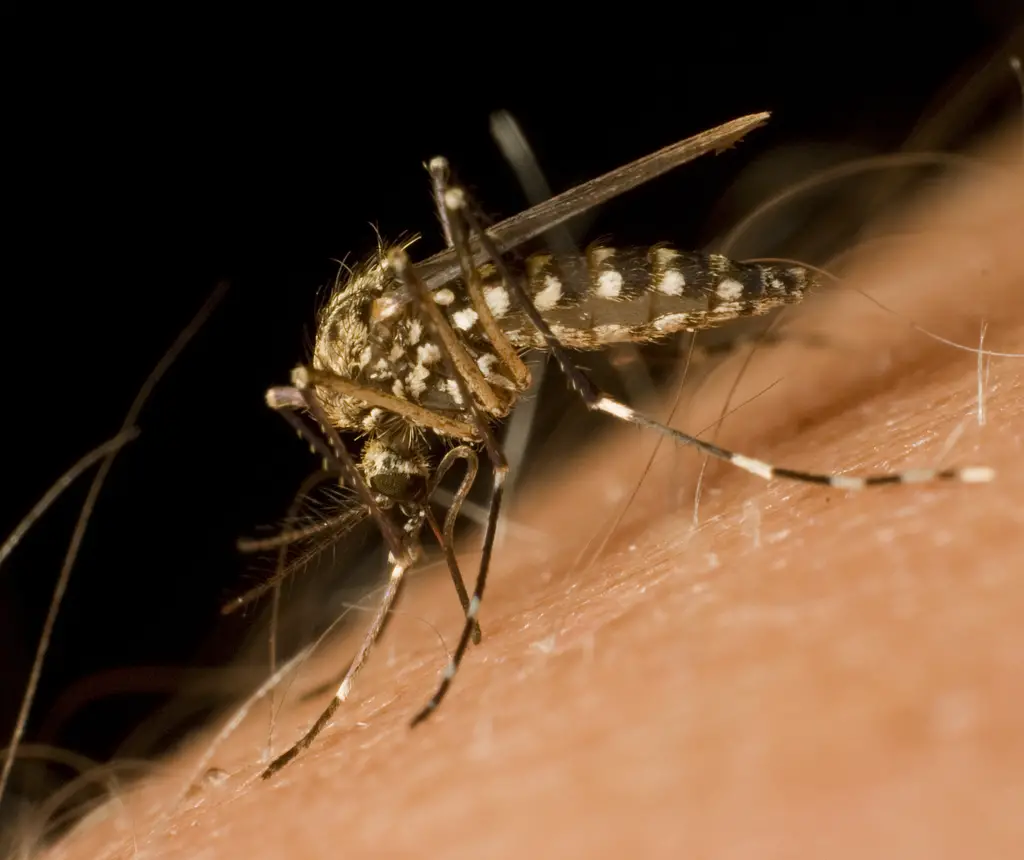
The Western Treehole Mosquito is primarily found in wooded and semi-wooded areas of Arizona. It gets its name from its preferred breeding sites—water-filled tree holes, though it can also use containers like buckets or barrels. Adults are medium-sized with dark coloring and lighter markings, similar to other Aedes species.
This species is aggressive during daylight hours, often targeting humans and animals in shaded outdoor areas. Its bite can be painful and itchy, though it is not considered a major vector of human diseases in Arizona. However, it does play a role in transmitting dog heartworm to pets.
In Arizona, Aedes sierrensis is more common in regions with trees and seasonal rainfall. It is especially active after the summer monsoon season when natural tree cavities collect rainwater, creating ideal breeding habitats.
Tule Mosquito (Culex erythrothorax)
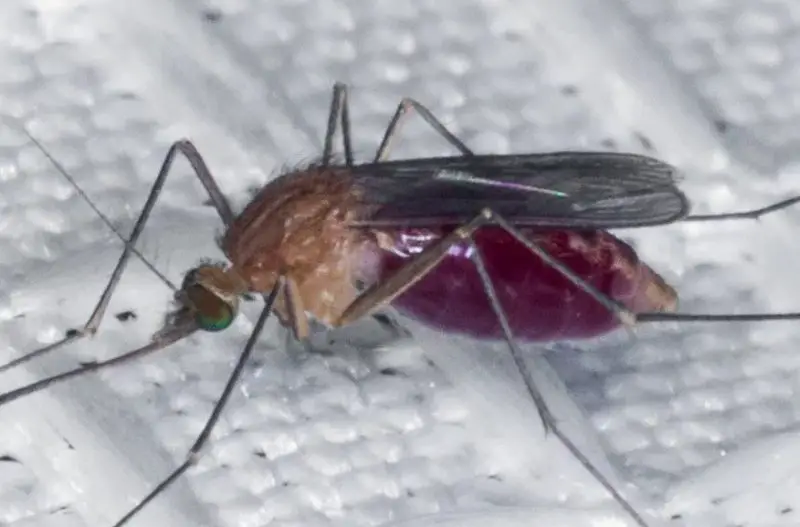
The Tule Mosquito, scientifically known as Culex erythrothorax, is a species often associated with marshes and wetlands. It gets its common name from its close connection with tule reeds and cattail plants, where it commonly breeds. Adults are medium-sized and have a reddish-brown thorax, making them slightly different in appearance from other Culex mosquitoes.
This mosquito is most active during dusk and night, targeting both birds and mammals. It is an important vector of West Nile virus in the western United States, including Arizona, and is carefully monitored by mosquito control programs. Its bite can be irritating and causes itching that lingers longer than some other species.
In Arizona, the Tule Mosquito thrives in ponds, canals, marshes, and irrigation ditches with dense vegetation. Areas with cattails or tule plants provide the perfect habitat for this species, especially during warmer months when standing water is abundant.
Banded Foulwater Mosquito (Culex stigmatosoma)
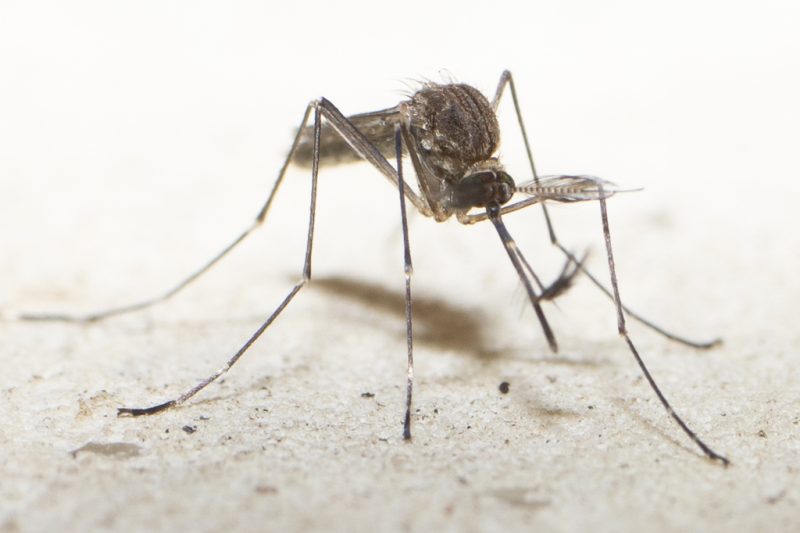
The Banded Foulwater Mosquito, scientifically known as Culex stigmatosoma, is a species that prefers breeding in water with high organic content. In Arizona, it is typically found in winery waste ponds, sewage ponds, dairy ponds, and other nutrient-rich stagnant water. Adults are medium-sized and brownish, with subtle banding on the legs that helps distinguish them from other Culex mosquitoes.
Females primarily feed on birds but will bite humans if given the opportunity. They are most active during dusk and nighttime hours. While they are not considered a major vector of human diseases, they can carry arboviruses and should still be monitored in areas where people and livestock are present.
This mosquito thrives in environments rich in organic material. In Arizona, its presence is closely tied to artificial or natural water bodies with decaying plant matter or other nutrient-rich substrates, making it more common near agricultural operations and urban waste areas.
Winter Mosquito (Culiseta inornata)
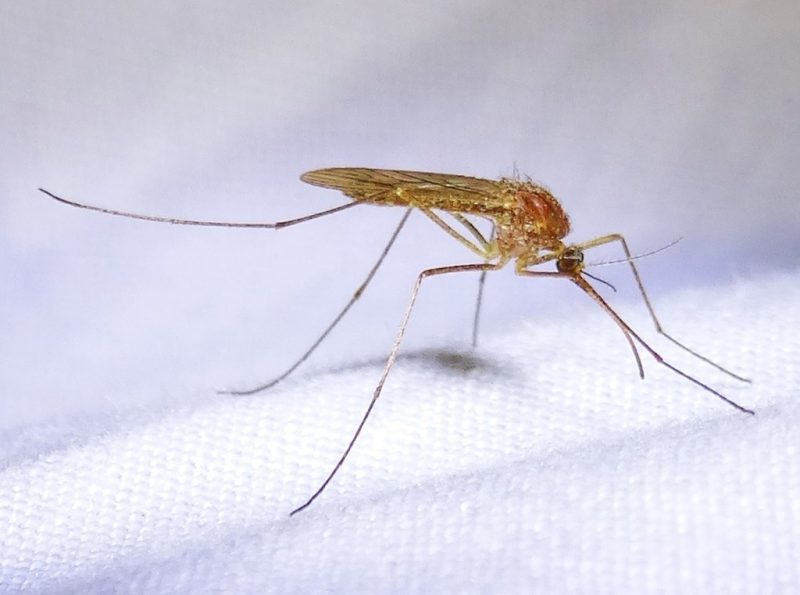
The Winter Mosquito is unusual compared to other Arizona species because it is most active during cooler months. Adults are larger than most common mosquitoes, with a grayish body and long legs. They are easily identified by their size and dull coloration.
This species feeds on both mammals and birds, including humans, but it is not a significant vector of human disease in Arizona. Its bites can still be bothersome, leaving red welts that may linger longer than those from smaller mosquitoes.
In Arizona, Culiseta inornata is more common in cooler, higher elevation areas where water sources are available. It breeds in ponds, lakes, and marshes, often becoming more noticeable during late fall and winter when other mosquito species decline.
Western Malaria Mosquito (Anopheles freeborni)

The Western Malaria Mosquito, scientifically known as Anopheles freeborni, is a slender mosquito distinguished by its spotted wings and angled resting posture. Historically, it was an important vector of malaria in the western United States, including parts of Arizona, though local transmission today is extremely rare.
This species primarily bites at night, feeding on humans and livestock alike. Its bite can be irritating, but the main concern is its potential role as a disease vector. Mosquito control programs continue to monitor this species due to its historical significance and its ability to transmit malaria under the right conditions.
In Arizona, Western Malaria Mosquitoes are typically found near permanent or semi-permanent water sources such as ponds, lakes, and slow-moving rivers. They are more common in rural and agricultural areas where water collects and remains undisturbed, providing ideal breeding habitats.
Life Cycle of Mosquitoes in Arizona
Mosquitoes in Arizona go through four stages of development: egg, larva, pupa, and adult. Eggs are usually laid in water or on damp surfaces that will eventually flood. Once submerged, the eggs hatch into larvae, also called “wrigglers,” which feed on microorganisms.
The larval stage lasts several days to weeks, depending on temperature and water conditions. Larvae then develop into pupae, or “tumblers,” which do not feed but prepare to emerge as adults. Within a short time, the adult mosquito surfaces, ready to begin feeding and reproducing.
Arizona’s warm climate speeds up this life cycle, especially during summer and after monsoon rains. In some cases, mosquitoes can complete their development in just 7–10 days, leading to sudden population surges.
Mosquito Season in Arizona
Mosquito season in Arizona typically begins in the late spring and peaks during summer and early fall. The hot weather combined with seasonal rains creates ideal breeding conditions. After heavy monsoon storms, large numbers of mosquitoes can appear within a week.
Daytime biters like Aedes aegypti and Aedes albopictus are most noticeable in urban and suburban neighborhoods, while Culex species dominate at night near irrigated fields, canals, and wetlands. Higher elevation areas may see fewer mosquitoes, but populations still rise after summer rains.
Although some species are active year-round in warmer parts of the state, mosquito activity generally decreases in winter when temperatures drop. However, mild winters can allow species like Culiseta inornata, the Winter Mosquito, to remain active.
Habitats and Breeding Sites
Arizona mosquitoes take advantage of both natural and artificial habitats. Common breeding sites include ponds, canals, marshes, and irrigation ditches. Agricultural areas with standing water are especially attractive to species like Culex erythrothorax.
In cities and suburbs, container-breeding mosquitoes such as Aedes aegypti thrive. They use buckets, bird baths, flowerpots, discarded tires, and even small puddles. Because of Arizona’s desert climate, people often store water in containers, which inadvertently creates breeding opportunities.
Treehole mosquitoes such as Aedes sierrensis rely on natural cavities filled with rainwater, making wooded areas prime habitats. Each species adapts to specific environments, but all require some form of standing water to reproduce.
Health Risks and Diseases Transmitted
Several mosquito species in Arizona are capable of transmitting diseases. The most common public health concern is West Nile virus, spread mainly by Culex mosquitoes. Arizona reports cases of West Nile virus almost every year, especially in Maricopa County.
Other diseases of concern include St. Louis encephalitis, also spread by Culex species, and the potential for dengue, Zika, and chikungunya from Aedes aegypti and Aedes albopictus. While local outbreaks are rare, the presence of these mosquitoes means the risk exists if travelers bring the viruses into the state.
Historically, malaria was present in Arizona, but it has been eradicated. Anopheles freeborni, the Malaria Mosquito, still lives in the region, so monitoring remains important even though cases are now almost always imported.
Best Time and Place to Spot Mosquitoes
If you want to identify mosquitoes in Arizona, the timing and location matter. Culex mosquitoes are most active from dusk through the night, especially around irrigated fields, wetlands, and canals. Aedes aegypti and Aedes albopictus, on the other hand, bite primarily during daylight hours in urban backyards.
After heavy summer rains, Aedes vexans populations surge, making them easy to spot in rural areas with temporary floodwater pools. Treehole mosquitoes appear after monsoon storms in wooded regions, while the Winter Mosquito becomes noticeable in cooler months at higher elevations.
For general observation, early morning and evening hours provide the best chances to encounter different species, though some aggressive biters are active throughout the day.
Prevention and Control in Arizona
Managing mosquitoes in Arizona requires both personal protection and community efforts. Homeowners can reduce populations by removing standing water from yards, emptying containers, and maintaining swimming pools. Using mosquito screens and wearing protective clothing helps prevent bites.
Insect repellents containing DEET, picaridin, or oil of lemon eucalyptus are effective at keeping mosquitoes away. For added protection outdoors, fans can help since mosquitoes are weak fliers.
City and county health departments across Arizona also conduct mosquito surveillance and control programs. These include monitoring mosquito traps, spraying when needed, and testing for viruses like West Nile. Community cooperation is vital to reducing risks statewide.
FAQs about Mosquitoes in Arizona
Are mosquitoes bad in Arizona?
Yes, especially after the summer monsoon rains. Populations can rise quickly, and some species are aggressive daytime or nighttime biters.
Do mosquitoes in Arizona carry diseases?
Yes. West Nile virus is the most common, but species in Arizona can also transmit St. Louis encephalitis, dengue, Zika, and chikungunya.
What attracts mosquitoes in Arizona homes?
Standing water in containers, clogged gutters, bird baths, and poorly maintained pools are common attractants in residential areas.
Do mosquitoes live year-round in Arizona?
Most species are seasonal, peaking in summer, but some like the Winter Mosquito (Culiseta inornata) can remain active during mild winters.
Which mosquito bites during the day in Arizona?
Aedes aegypti and Aedes albopictus are the most common daytime biters, often found around homes and urban neighborhoods.




